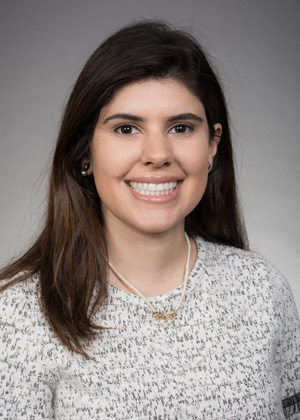
Clinician Profile: Dr. Nassim Rad

When we meet to talk about her clinical practice, Dr. Nassim Rad says, “I don’t know why Janna [Department Chair Janna Friedly, MD, MPH] thought I would be interesting.” In talking to her about her approach to medicine, however, it quickly becomes clear.
Dr. Rad is a physiatrist—also known as a physical medicine and rehabilitation physician—and she is also board-certified in neuromuscular medicine. This rare combination allows her to both diagnose and treat complex muscle and nerve diseases like muscular dystrophy and ALS, and help patients manage everyday challenges such as mobility, swallowing, and bathroom needs.
Instead of seeing two separate specialists—a neurologist for diagnosis and drug treatments as well as a physiatrist for quality-of-life care—patients can see Dr. Rad for both. This integrated approach improves coordination and reduces fragmented care.
Her dual training is especially valuable when a diagnosis is unclear or when treatment results are not as expected. “In some cases,” she explains, “a rehabilitation physician may identify that something isn’t progressing as anticipated and collaborate with a neurologist to reassess the diagnosis or treatment plan. With my combined training, I’m able to approach both aspects at once, which can streamline care and provide more continuity for the patient.”
Dr. Rad is an associate professor in the UW Medicine Department of Rehabilitation Medicine and co-director of the ALS Clinic at UW Medical Center – Montlake, recently named an ALS Center of Excellence by the ALS Society. She also co-directs the UW MDA Clinic.
She completed her residency in physical medicine and rehabilitation at Northwestern University, followed by a neuromuscular fellowship at the University of Michigan. Earning a spot in the fellowship wasn’t easy—it took determination and a strong belief in her path. At the time, very few physiatrists had ever been accepted into neuromuscular fellowships, so she knew she had to go the extra mile to prove she belonged. “There wasn’t a simple application process,” she recalls. “I had to make the case for why I could bring something valuable.”
Today, it is becoming slightly more common for physicians to combine these specialties, but it’s still rare.
After joining UW Medicine in 2017, Dr. Rad quickly filled an essential niche. She established UW's first multidisciplinary clinic for patients with spinal muscular atrophy (SMA) and participates in clinical trials for gene modifying treatments for these patients.
She also built collaborations with Seattle Children’s Hospital to support the transition of individuals with neuromuscular conditions such as Duchenne muscular dystrophy from pediatric to adult care, a transition that can be jarring. Children with Duchenne’s see all their specialists in one, coordinated center. When they reach 18, they transition to an adult clinical model, which can mean seeing multiple specialists in multiple locations, across many days or weeks.
“Now that I’ve been practicing for some years,” she says, “I get patients who have moved away calling me, to see if they can travel to come see me for an appointment again.” Unfortunately, her schedule is full, and there is a local waiting list.
Traditionally, neurologists run neuromuscular clinics, where they focus on diagnosis and drug treatments. But patients also need coordinated care for feeding, swallowing, mobility, and urinary concerns. Rehabilitation physicians are experts in helping patients manage functional challenges like these, and they are an integral part of the care team for anyone with a complex and debilitating disease like ALS.
Her interdisciplinary approach prioritizes quality of life and fosters close collaboration between rehabilitation and neurology teams. This integrated model improves outcomes, and research shows it can extend longevity for neuromuscular patients more effectively than any drug alone.
Looking to the future, Dr. Rad wants more physiatrists to learn about neuromuscular medicine. The benefits for patient care in having one point of contact for both neurological and rehabilitation care are clear.
Ultimately, Dr. Rad hopes to grow the Neuromuscular Multidisciplinary Clinics, and create more certified centers of excellence that bring rehabilitation and neurology together—ensuring that neuromuscular patients receive medical, functional, and quality-of-life care under one roof.